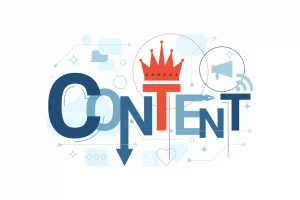
In today’s fast-paced digital landscape, brands face an unprecedented challenge: the need for real-time responses on social media. This necessity is driven by the instantaneous nature of communication in the age of social media, where customer expectations are high, and the competition is fierce. Brands must not only respond quickly but also ensure that these interactions are authentic and personalized. This blog post will explore the intricacies of managing real-time social media responses, the balance between speed and personalization, the importance of social listening tools, and the necessity of a robust crisis response plan.
Understanding the Real-Time Social Media Landscape
Social media platforms have transformed the way brands interact with their customers. According to Econsultancy, 51% of brands find it challenging to extract insights from real-time social marketing data. The pressure to respond quickly and authentically to customer feedback has never been greater. In this environment, brands must navigate the complexities of customer expectations, technological advancements, and the ever-changing social media landscape.

The Importance of Speed and Personalization
Balancing speed and personalization is crucial for brands aiming to meet customer expectations while maintaining authenticity. A survey by Sprout Social revealed that 70% of consumers expect companies to provide personalized responses to customer service needs. This statistic underscores the importance of tailored interactions in building customer loyalty and trust.
However, the pressure to be “always on” can overwhelm social media teams. To strike the right balance, brands can implement a tiered approach:
- Automated Responses for Common Inquiries: Utilizing chatbots or pre-written templates allows brands to provide immediate acknowledgment for frequently asked questions. This approach ensures a quick initial response while buying time for more personalized follow-ups.
- Personalized Human Interactions: For complex issues or sensitive topics, prioritizing human responses that address specific customer concerns demonstrates empathy and builds stronger connections.
- Hybrid Model: Combining automation with human oversight can enhance efficiency. AI-powered tools can suggest personalized responses, which can then be reviewed and customized by team members before being sent.
- Segmentation and Targeting: By leveraging customer data and social listening tools, brands can segment their audience and tailor content to specific groups. This strategy allows for more relevant and personalized messaging at scale.
- Real-Time Personalization: Advanced technologies such as AI and machine learning can analyze user behavior and preferences in real-time, enabling dynamic content adjustments and targeted recommendations.
To effectively implement these strategies, brands should invest in social media management tools that offer features like Smart Inbox to consolidate messages across platforms, saving time and improving response efficiency. Furthermore, training social media teams on brand voice and empowering them to make quick decisions within established guidelines is essential for success.
Leveraging Social Listening Tools
In the realm of real-time social media responses, social listening tools have become indispensable. These tools enable brands to monitor, analyze, and respond to online conversations about their products, services, and industry across various platforms. By harnessing the power of social listening, brands can gain real-time insights into customer sentiment and emerging trends.

One of the primary benefits of social listening tools is their ability to provide immediate insights. For example, Sprout Social’s suite of Listening tools can automatically sift through billions of data points to uncover critical customer insights. This capability allows brands to identify and address potential issues before they escalate into crises.
Advanced social listening platforms like Brandwatch offer extensive data coverage, analyzing both historical and real-time conversations from over 100 million sources. This comprehensive view enables brands to track changes in consumer sentiment over time and identify long-term trends that can inform strategic decision-making.
Many social listening tools now incorporate AI and machine learning capabilities to enhance their functionality. For instance, Sprinklr leverages AI to analyze not only text-based content but also visual brand mentions in images and videos. This advanced feature set allows brands to capture a more complete picture of their online presence and customer perceptions.
To effectively leverage social listening tools for real-time response management, brands should:
- Set Up Custom Alerts: Establish alerts for brand mentions and relevant keywords to ensure immediate notification of potential issues or opportunities.
- Utilize Sentiment Analysis: Quickly gauge the emotional tone of conversations and prioritize responses accordingly.
- Inform Content Creation: Use social listening data to guide content creation and campaign strategies, ensuring that messaging resonates with current audience interests and concerns.
- Integrate Insights with Business Intelligence Tools: By connecting social listening insights with CRM systems, brands can achieve a 360-degree view of customer interactions and preferences.
- Conduct Competitive Analysis: Monitor competitor mentions and strategies to identify opportunities for differentiation.
By effectively leveraging social listening tools, brands can respond more quickly and appropriately to real-time social media challenges, proactively shaping their online presence and customer relationships.
Creating a Robust Crisis Response Plan
In the world of social media, crises can arise unexpectedly and escalate rapidly. Therefore, having a comprehensive crisis response plan is essential for effective social media crisis management. This plan should outline specific steps to take when a crisis emerges, ensuring a swift and coordinated response across all channels.

Key Components of a Crisis Response Plan
- Crisis Identification: Define what constitutes a crisis for your brand and establish clear triggers for activating the plan. This may include metrics such as a sudden spike in negative mentions or a viral post criticizing your company.
- Response Team Structure: Clearly define roles and responsibilities within your crisis management team. This typically includes:
-
- A crisis leads to overseeing the response
- Social media managers to monitor and engage on platforms
- PR specialists to craft messaging
- Legal counsel to review communications
- Customer service representatives to handle inquiries
- Communication Protocols: Establish guidelines for internal and external communication during a crisis. This should include:
-
- Approval processes for public statements
- Designated spokespersons
- Templates for initial responses
- Escalation procedures for serious issues
- Platform-Specific Strategies: Tailor your response approach to each social media platform, considering their unique features and audience expectations. For instance, Twitter may require more frequent updates, while Facebook allows for longer, more detailed posts.
- Monitoring and Analysis: Implement tools and processes to track the crisis in real time. This includes:
-
- Setting up social listening alerts for relevant keywords
- Tracking sentiment changes
- Monitoring competitor and industry responses
- Post-Crisis Evaluation: Plan for a thorough review after the crisis has subsided. This should involve:
-
- Analyzing the effectiveness of your response
- Identifying areas for improvement
- Updating the crisis plan based on lessons learned
To ensure your crisis response plan remains effective, conduct regular drills to test and refine your procedures, keep contact information and role assignments up to date, and review and update the plan at least annually to account for changes in the social media landscape.
The Role of Sociobo in Enhancing Social Media Responses
In navigating the complexities of real-time social media responses, brands can benefit significantly from the services offered by Sociobo. Sociobo specializes in leveraging social proof aggregation to enhance brand visibility, authority, and influence across various social media platforms.

Enhancing Brand Credibility
Sociobo’s approach revolves around the concept of social proof, a psychological phenomenon where people conform to the actions and beliefs of others in uncertain situations. In the context of social media, this is manifested through metrics such as followers, likes, comments, and shares. High numbers in these metrics suggest credibility and popularity, which can attract more genuine engagement and followers.
By utilizing Sociobo’s services, brands can enhance their perceived credibility and influence on social media. The program focuses on providing aggregated followers—high-quality bot accounts created using official apps that are active and engaged with your content. Unlike fake followers, which are often inactive and detrimental to engagement rates, aggregated followers help boost engagement, improve profile discovery, and positively impact the trust score of social media profiles in algorithms.
Tailored Solutions for Diverse Platforms
Sociobo offers growth services across multiple platforms, including Instagram, TikTok, YouTube, Facebook, and Spotify. The program provides customized experience packages for other platforms upon request, ensuring that brands can effectively enhance their presence wherever their audience is active.
By leveraging Sociobo’s services, brands can not only improve their social media metrics but also create a strong brand presence that attracts organic followers. This is particularly beneficial for celebrities and brands looking to maintain their image and promote their content effectively in social media algorithms.
In the ever-evolving landscape of social media, the challenge of real-time responses is one that brands must navigate with agility and strategy. By balancing speed and personalization, leveraging social listening tools, and creating a robust crisis response plan, brands can enhance their customer interactions and build stronger relationships.
Moreover, by integrating Sociobo’s services into their social media strategy, brands can further amplify their credibility and influence, ensuring they stand out in a crowded digital space.
If you’re ready to take your social media presence to the next level, consider exploring Sociobo’s offerings. With a focus on social proof aggregation, Sociobo is designed to help you enhance your brand’s visibility and authority, making it more attractive to both organic followers and potential customers. Visit Sociobo.com today to learn more about how we can help you navigate the challenges of real-time social media responses and build a powerful online presence.






No comment yet, add your voice below!